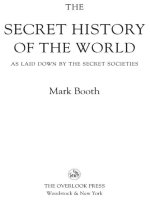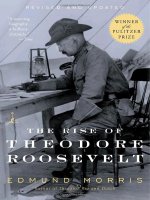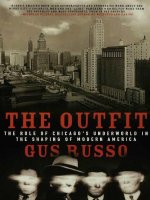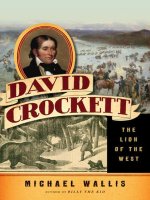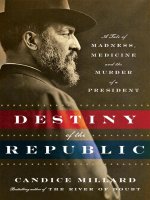Erik sass will pearson mangental floss history of th ica (v5 0)
Bạn đang xem bản rút gọn của tài liệu. Xem và tải ngay bản đầy đủ của tài liệu tại đây (3.86 MB, 393 trang )
The Mental Floss
HISTORY
of the
UNITED
STATES
THE (ALMOST) COMPLETE AND (ENTIRELY)
ENTERTAINING STORY OF AMERICA
Erik Sass
with Will Pearson and Mangesh Hattikudur
Contents
Introduction
1 Prehistory, Puritans, Plantations, and Pirates (23,000 BCE–1715 CE)
2 Don’t Worry, Be Scrappy! (1715–1815)
3 Drunk and Illiterate (and Not Just a Little Bit) (1815–1850)
4 Time for Your Bloodbath (1850–1880)
5 Empire State of Mind (1880–1910)
6 The United State of Amazing (1910–1930)
7 Superpower Surprise (1930–1955)
8 Sex, Drugs, and Mocking Roles (1955–1975)
9 Morning in America? (1975–1992)
10 America the Decider (1992–2010)
Appendix: 44 Presidents in 45 Minutes
Index
Acknowledgments
About the Authors
Also available from mental_floss
Copyright
About the Publisher
Introduction
Americans are patriotic people: a 2008 poll showed 72 percent believe the USA is “the
best nation in the world.” But it turns out that “patriotic” and “historically
knowledgeable” can be two di erent things: in recent surveys, almost half of Americans
didn’t know that the Constitution gives Congress the right to declare war, while onequarter of high school students said Columbus set sail after 1750 and a third couldn’t say
in which century the American Revolution occurred.
Why is that, when there are so many amazing, fascinating, weird, unbelievable but
still true facts and stories? Probably because some history books—and some history
teachers—just aren’t putting the “fun story” into “fundamental history.” The truth is,
learning about American history doesn’t have to be a death-march through dusty dates,
dreary details, and dead dudes in wigs. America is an amazing place, and it’s all in the
history, baby. How did rum and tobacco save the colonies? When did geopolitics hinge
on a large rodent? Who made the rst potato chip? What was the worst accident during
a U.S. nuclear test? Who invented rock-and-roll? Did the CIA really support Osama bin
Laden? Does internet dating really work?
You’ll nd all the answers in this book—plus plenty of other weird, intriguing, and
downright incredible facts omitted by the average high school history course. Of course,
there’s absolutely no way a single volume can cover all the stu you’re supposed to
know about American history, but we promise this book contains most of the stu you
really ought to know … along with crazy trivia and terribly ironic quotes perfect for
breaking the ice at cocktail parties, wedding receptions, blind dates, armed stando s,
and other awkward situations.
THE STATE OF THE UNION
“Begin at the beginning” is tricky advice when you’re talking about American history.
Do you start with the arrival of the rst human beings? The rst native civilizations?
The rst European contact? The rst permanent European settlement? But we’ll give it
a shot.
The rst human inhabitants of North America arrived during the last Ice Age, when
hunter-gatherers from northern Asia followed tasty wooly mammoths across a land
bridge connecting Siberia to Alaska. Several waves of nomads may have crossed from
Asia to North America between 23,000 BCE and 9000 BCE, at which point the Ice Age
ended, the polar ice caps melted, and sea levels rose about 400 feet, submerging the
land bridge and isolating the nomads in North America.
Over thousands of years their descendants migrated south, crossing 10,000 miles of
incredibly varied terrain to reach the southern tip of South America no later than 8000
BCE. Spreading out across tundra, forests, grasslands, swamps, deserts, and jungles, they
gradually formed separate linguistic and cultural groups. By one count, there are still
about 2,000 native languages spoken in the Western Hemisphere, the vast majority–
about 1,450–in South America.
Around 4000 BCE, one Mesoamerican group, the Olmecs of southeastern Mexico,
invented agriculture by domesticating maize (corn), leading to the rst Native American
civilization. The Olmecs are considered the “mother culture” of the civilizations that
followed, including the Maya and Aztecs. The domestication of maize and another staple
crop, the potato, triggered the formation of complex societies in the Andean region of
South America, including the Nazca, Moche, Chimu, and Inca.
But native societies in what became the United States never attained the same level of
complexity. Although some groups had large populations that supported craftsmen,
royalty, and priests, they never developed systems of writing, so much of their history
remains mysterious. Sources like oral histories, linguistics, and archaeology generally
only go back about 3,000 years, leaving the period from 7000 to 1000 BCE pretty darn
enigmatic. The arrival of Europeans added assault to mystery, with new diseases and
brutality decimating the native population of the future United States, which dropped
from an estimated 5–10 million in 1492 to 250,000 in 1900. This tidal wave of death
wiped out whole cultures and languages, so long story short: we know a lot more about
the relatively short period of European settlement in the New World than we do about
the much longer native history that preceded it. Acknowledging this bias, we’re mostly
going to begin with the parts of the past we know more about—meaning Europe an
settlement to the present—because a book lled with “gosh, we dunno” probably
wouldn’t sell too many copies.
WHAT HAPPENED WHEN
23,000
–9000
BCE
BCE
100
CE
Asian nomads cross the land bridge connecting eastern Siberia
to Alaska.
Teotihuacan in Central Mexico has a population of 150,000+.
700
Mayan city of Tikal has a population of 100,000+.
900
Mayan civilization mysteriously disappears.
1002/3
Vikings led by Leif Ericson discover Vinland (Newfoundland).
1150
Chaco Canyon culture sites are abandoned.
1427
Aztec Empire is founded in Mexico.
1438
Inca Empire is founded in Peru.
October 12,
Columbus makes landfall in the Bahamas.
1492
1499
Amerigo Vespucci explores coast of South America.
1519
Aztec Empire is destroyed by Hernán Cortés.
1533
Inca Empire is destroyed by Francisco Pizarro.
August 28, 1565
St. Augustine, Florida, is founded by Spanish settlers.
1585
English colonists settle on Roanoke Island, Virginia.
1590
Roanoke colony is mysteriously abandoned.
May 14, 1607
English colonists found Jamestown, Virginia.
July 3, 1608
December 18,
French colonists found Quebec.
Puritan Separatists (Pilgrims) found Plymouth, Massachusetts.
1620
1625
September 17,
Dutch colonists found New Amsterdam.
Puritans found Boston, Massachusetts.
1630
1634
English colonists (including persecuted Catholics) settle
Maryland.
1641–1666
Beaver Wars pit Iroquois against rival tribes, with European
support.
May 18, 1642
French colonists found Montreal.
June 6, 1676
Nathaniel Bacon leads rebellion against royal governor in
Virginia.
March 4, 1681
Royal charter granted to William Penn for Quaker colony in
Pennsylvania.
LIES YOUR TEACHER TOLD YOU
LIE: Columbus was the first to discover America.
THE TRUTH: Columbus gets his own holiday for his so-called accomplishment, but
there’s no doubt he was late to the discovery game. The Vikings discovered America
about 500 years before he got there, and it’s likely that the Polynesians found it even
earlier!
The seafaring Polynesians reached Fiji by 1300 BCE, Tahiti by 300 CE, and Hawaii by
400. Given their remarkable feats of navigation, it seems likely they reached the
Americas as early as 500. In South America, they appear to have brought chickens to
Peru.
BREAST ASSURED
While the Vikings weren’t in the New World for long, they did pick up some good
stories. One saga tells of a Viking hunting party in Newfoundland surrounded by
native warriors. The Viking men were inclined to withdraw, but Freydis, the pregnant
half sister of Leif Ericsson, would have none of this cowardice. She charged the eld,
revealed her ample bosom, and slapped one of her breasts with the at side of a
sword–because that’s how Viking ladies do it. The startled natives retreated without a
fight. Can you blame them?
The Viking case is as solid as a battle axe: Leif Ericsson, the adventurer who sailed
from Greenland to Newfoundland in 1002 or 1003, made several trips and reported his
adventures in “Vinland” in detail. The sheer numerical superiority of the local Native
Americans eventually persuaded the Vikings to pack it in. They abandoned Vinland
around 1015, and the American adventure became a thing of legend. No one is certain
of the dates because, well, the Vikings were illiterate (or preliterate, if you want to be
nice about it), but Leif’s adventures were incorporated into oral histories that were
passed down until they were finally transcribed in the twelfth or thirteenth centuries.
CONSTRUCTION SEASON
The Aztecs, Mayans, and Incas tend to get all the credit for building awesomely
gigantic monuments. But it wasn’t all teepees and totem poles up North: there was
plenty of major construction afoot.
In the Midwest, a succession of “mound-builder” tribes or tribal confederations lived
in clusters of villages along the main tributaries of the Mississippi River. They are best
known for, yes, building earthen mounds, beginning around the tenth century CE,
including Monk’s Mound, a 100-foot-tall attened pyramid covering almost 14 acres,
in modern-day Cahokia, Illinois. Most likely, the tribes used these mounds like the
ancient Mesopotamians and Central Americans did, as platforms to bring the priestly
elite closer to the gods. Around the same time, the “Fort Ancient” culture in the
Midwest was busy raising enormous structures in the shapes of animals. The largest of
these, the Serpent Mound in Adams County, Ohio, is three feet tall, six feet wide, and
more than 1,300 feet long. The last mound-building society disappeared in the
sixteenth century–possibly destroyed by nomadic Plains tribes, newly mobile with the
acquisition of horses from Spaniards.
In the Southwest, the Anasazi of modern-day New Mexico built multi-story stone
structures (some as tall as four stories) that are still standing–and they didn’t even use
mortar or cement! At its height in the tenth and eleventh centuries, the Chaco Canyon
proto-city probably had a population of 4,000–5,000 people, while the surrounding
network of villages may have housed 25,000–50,000 people. Two hundred and fty
miles of roads, some of them paved with cobblestones, connected Chaco and the
surrounding villages. No one knows why Chaco Canyon was abandoned around 1150,
but there is evidence prolonged drought caused a famine. There may also have been
violent upheaval; the oral histories of Navajo pueblo-dwellers recall Chaco as a place
where “people got power over other people,” suggesting exploitation and social
unrest.
LIE: Columbus realized he’d discovered a new land.
THE TRUTH: You’ve probably heard that Columbus discovered America by mistake.
That’s fair. After all, Renaissance Europeans believed that creation had been fully
revealed, so they weren’t exactly expecting to nd two giant continents hidden on the
other side of the planet. Plus, Columbus had drastically miscalculated the circumference
of the earth at 19,000 miles instead of 24,900 miles–he based his projections on the
work of Pierre d’Ailly, a Catholic cardinal who used Roman miles (4,840 feet) instead of
nautical ones (6,080 feet). Units, people!
In 1592, exactly 100 years after Columbus “discovered” the
New World, the English Parliament passed a law setting the
“statute mile” at its current length of 5,280 feet.
Thus when the Niña, Pinta, and Santa Maria made landfall in the Bahamas on October
12, 1492, Columbus naturally assumed he had hit Asia. Sure, he saw no sign of the silk
and pepper he was looking for, but he did nd some people to call “Indians,” with a
small (but still worth it) amount of gold to steal. In 1493 his patrons, Ferdinand and
Isabella of Spain, sent Columbus back across the ocean. He was given a sweet new title,
Admiral of the Ocean Sea, and instructed to rob the place–wherever it was–blind. The
admiral was then to serve as governor of whatever was left.
This is where an understandable mistake turns into bullheaded stupidity. On the four
return expeditions from 1493 to 1502, it gradually dawned on everyone but Columbus
that the land they were exploring wasn’t the East Indies. This suspicion was supported
by a whole bunch of evidence, including the testimony of natives who insisted, again
and again, that they’d never heard of China, Japan, India, silk, pepper, elephants, or
any of that nonsense.
Amerigo Vespucci, dispatched in 1499 by the king of Portugal as quality control,
wrote in his rst report that “these regions … may rightly be called a new world,” and
was later honored by having his name stamped on the place. But Columbus sco ed at
his colleague. He dismissed the locals as “bestial men who believe the whole world is an
island,” and forced his crew, under threat of corporal punishment, to sign an a davit
declaring they’d discovered Asia. Obstinate till the very end, Columbus died in 1506, still
believing he was right.
CHAINS YOU CAN BELIEVE IN
Geography wasn’t the only subject Columbus failed at: he was also a terrible
governor. In fact, he was so bad that Ferdinand and Isabella called him back to Spain
in chains in 1503 to answer charges of corruption and brutality. In 1546, the
Dominican monk Bartolomé de las Casas wrote:
On the island of Hispaniola, of the above three million souls that we once saw, today there be no more than two
hundred of those native peoples remaining … The Spaniards have shown not the slightest consideration for these
people, treating them (and I speak from rst-hand experience, having been there from the outset) not as brute
animals–indeed, I prayed to God that they might treat them as well as animals–so much as piles of dung in the
middle of the road.
The monarchs found Columbus not guilty (raping and pillaging had kind of been
the whole point), but ordered him into retirement.
LIE: The Puritans came to America to establish religious freedom.
THE TRUTH: The Puritans came to America to escape other people’s religious freedom.
The story starts in 1593, when radical Protestant “Separatists” emigrated from England
to Holland, where they could live in peace, without being hung or jailed for religious
nonconformity. That led to a new problem for the Puritans: the easygoing Dutch
allowed people to practice all sorts of crazy religions, including Judaism, Catholicism,
and eventually even atheism–the horror! Meanwhile, the Protestant Dutch didn’t
observe the Sabbath with the same zeal as the Puritans and also permitted drinking,
gambling, music, dancing, and “mixed company” in social settings–all big Puritan nono’s.
Worried that their children were being “Dutchi ed,” the Separatists hopped the
May ower out of Holland on September 16, 1620. Remembered as “the Pilgrims,” they
headed for northern Virginia but wound up in what is now Massachusetts, where they
founded Plymouth, the rst Puritan colony in the New World. The rst years were fairly
disastrous, with half the colonists dying in the rst winter of 1620–1621–but it was still
better than living near dancing, drinking gamblers. Separatists were so eager to get
away from Holland and England that two more boatloads arrived in 1623 and 1627,
offsetting the attrition.
Inspired by the “success” at Plymouth, about 20,000 non-Separatist Puritans left
England for Boston, the rst settlement of the royally chartered Massachusetts Bay
Colony, beginning in 1628. But the edgling theocracy of the non-Separatists proved
just as intolerant as that of the Separatists. When the free-thinking Roger Williams
suggested detaching church from state–a step that would technically allow the practice
of other religions–he was banished. Williams went on to found Rhode Island in 1635,
while fellow rebel Thomas Hooker led his more relaxed followers out of uber-strict
Boston to Connecticut in 1636. Shortly thereafter, the Puritan elders exiled Anne
Hutchinson for criticizing their authority, much as Puritans had criticized the Catholic
and Anglican clergy. It seems that Puritans, in addition to disapproving of laughing,
smiling, dancing, and touching, did not have a sense of irony. Good times.
But the bigger point is that traveling across the ocean in search of isolation didn’t
solve any of their problems. Like religious ideologues everywhere, the Puritans of
Massachusetts were surprised when new immigrants and their own children didn’t share
the same enthusiasm for the doctrine. In 1691, King Charles II accelerated the
breakdown of Puritan society when he changed the colony’s royal charter so that
property ownership, not membership in a Puritan church, became the basis of men’s
voting rights. He also amended the charter to include protection of religious dissenters.
Looking back, the old-fashioned Puritans might have regretted the move overseas.
BONUS LIE: “THE THIRTEEN COLONIES”
Like the rest of us, you probably bought the ol’ Thirteen Colonies story, but it’s not an
accurate depiction of colonial America for most of its history. In 1606 King James I
chartered just two companies to settle North America, the Virginia Company of
London and the Plymouth Company. As settlements were founded, each new city was
recognized as its own colony: for example, Connecticut actually contained 500
distinct “colonies” (or “plantations”) before they were merged into a single colony in
1661. Sometimes colonies were mashed together into mega-colonies, like the shortlived, super-unpopular Dominion of New England, which incorporated Massachusetts,
Rhode Island, Connecticut, New Hampshire, and Maine from 1686 to 1691, plus New
York and New Jersey from 1688 to 1691 for good measure. Colonies also split, like
Massachusetts, which spawned New Hampshire in 1679. And some colonies weren’t
really colonies at all: while it’s often listed as one of the Thirteen Colonies that
rebelled in 1775, Delaware wasn’t technically a colony or a province. Designated “the
Lower Counties on the Delaware,” it had its own assembly but fell under the authority
of the governor of Pennsylvania until it declared itself an independent state in August
1776. So technically, there were just 12 colonies in 1775 and 13 states in 1776.
WHERE MY GODS AT
Good Witch Hunting
Was it mass hysteria, backlash against loosened social restrictions, or dark sorcery that
fueled the Salem Witch Trials? Let’s start with a little background. The infamous witch
trials actually took place not in Salem Town, but in Salem Village, a small farming
colony outside Salem Town. The place was “the sticks,” as they say, with a population
of about 90 adult male landowners (and their families), compared to Salem Town’s 330
adult men. In keeping with the age-old divide between country and city folk, the
conservative farmers from Salem Village viewed the big city as a den of sin and vice,
while the cosmopolitan merchants of Salem Town looked down on their country cousins
as ignorant hicks. Meanwhile, the increasing population of Salem Town put pressure on
the farmers, as town streets pressed outward, and land grew increasingly scarce.
Salem Village sent a request to Britain for permission to
incorporate as a town, but it was returned with the rejecting
message “The King Unwilling.” In 1757 the determined residents
ignored His Majesty, calling the new town Danvers, and added the
king’s three-word message to the bottom of the town seal.
Unsettled by economic pressure and the feeling that society was evolving beyond their
control, the farmers of Salem Village were all too ready to believe accusations of
witchcraft, still widely feared in Europe. And of course, accusations of witchcraft are
always a convenient way to dispose of women who are viewed as too smart, too
independent, too strange, or too annoying. Many of the victims of the Salem Village
witch trials matched this description, with a suspiciously high number of single women,
some of them widows, who were highly visible for doing business in Salem Town. Plus,
there was an added incentive: the rules for hunting witches gave the accuser part of a
convicted witch’s property.
The hysteria began when a group of teenage girls, led by the pastor’s daughter,
accused 156 people from 24 towns and villages of witchcraft. The girls claimed that
these “witches” were casting spells and in icting demonic possession on them. They
were apparently inspired by the pastor’s black female slave, Tituba, whom he’d brought
to Massachusetts from the West Indies, and who frightened the girls with tales of
voodoo.
When the deputy constable of Salem Town, John Willard, suggested the girls were
making the stories up to get at personal enemies, they accused him of witchcraft too; he
was one of 19 found guilty of bizarre charges and executed. Another of the 19 was
George Burroughs–a Harvard graduate who hadn’t lived in Salem for almost a decade,
but who was brought back from Maine, tried, and executed after saying the Lord’s
Prayer correctly … because his accuser said the Devil spoke the correct version for him.
Obviously.
Oddly enough, the few people who actually were practicing “witchcraft"–Tituba,
another slave from the West Indies named Candy, and Dorcas Hoar, a white woman
who dabbled in the occult–were all set free after a brief time in jail.
OTHER PEOPLE’S STUFF
Location, Location, Location
After purchasing the entire island of Manhattan from uncomprehending natives for the
legendary $24 worth of cheap trade goods, the Dutch couldn’t get too upset when the
English robbed them of the island in turn. The rst Dutch settlers arrived on Governor’s
Island (just south of Manhattan Island) in 1624. They named it Noten Eylandt, or the
“Island of Nuts.” The following year, Fort Amsterdam was constructed on the southern
tip of Manhattan Island, the purchase of which was nalized in 1626. By 1655 there
were about 2,000 people living there–only half of them Dutch–making the city
something of a metropolis. (Back in 1640, Boston was the biggest city, with 1,200
inhabitants.)
Manhattan Island was named for an Algonquin tribe known as
the Manhattans, who “sold” it to the Dutch colonial governor,
Peter Minuit, in 1626 for “trinkets” said to be worth $24. Some
historians believe that the items were mistakenly given to a group
of Canarsie natives who lived not in Manhattan, but what is now
Brooklyn.
Dutch religious tolerance made New Amsterdam a haven for Spanish and Portuguese
Jews eeing oppression (which is basically redundant), Huguenots (French Protestants),
and even Catholics (well, sort of). As far as trade, the spot was perfect for a number of
reasons, including its proximity to the Hudson River, a highway for native trappers
bringing beaver pelts from the interior. The trade route was protected by another Dutch
colony, Orange (later Albany), about 200 miles upriver. At the same time, Manhattan
itself was easily defended from native attack by the Hudson and East rivers, and later a
defensive wall built just outside town (Wall Street).
Unfortunately for the Dutch, all of these advantages also attracted the attention of the
British, who seized New Amsterdam in 1664 during the Second Anglo-Dutch War. The
Dutch reclaimed it, but in 1673, the Brits seized it again in the Third Anglo-Dutch War.
The Brits were smart enough to continue policies of religious tolerance and boosting
commerce, and business went on pretty much as before–the only real change was that
the British and Dutch elite began to intermarry, forming a new Anglo-Dutch governing
caste called the Knickerbockers. (And oh yeah, under British law women could no longer
own property. Sorry ladies).
It’s All About the Beavers
The British and the French have never liked each other–ever–and their period of
cohabitation in the New World was certainly no exception. The two imperial powers
had totally di erent outlooks and delighted in annoying each other. The one thing they
could agree on, however, was beavers–speci cally, how awesome their fur was when
they weren’t wearing it anymore.
In fact, English, Dutch, and French colonial policy was largely shaped by competition
for control of the international beaver market. To secure beaver access, each nation
allied itself with di erent native tribes, whom they courted with gifts of money, alcohol,
and rearms. The French got things started in 1609 by aligning themselves with the
Huron and Algonquin, two erce groups living in central Ontario and New England,
respectively. The Algonquin and Huron had long battled the nearby Mohawks, and the
French were happy to take advantage of existing hostilities and join the ght. The
Mohawks, themselves a fairly erce group of people living in what is now eastern New
York State, had friends of their own. Together with the Seneca, the Cayuga, the Oneida,
and the Onondaga, the Mohawks formed the Iroquois League–a defensive alliance that
may date back to the twelfth century.
While the Iroquois League could eld a formidable army, it suddenly found itself at a
disadvantage against the Huron and Algonquin, who were now being armed with
muskets by the French. That’s where the English jumped into the fray, soon joined by
the Dutch, who found a pro t in running guns to the Iroquois in the 1640s. Now the
Iroquois turned the tables, driving the Hurons from their homeland with a series of
fierce attacks from 1645 to 1652.
MORE THAN JUST A PRETTY PELT
Europeans were big fans of beavers long before North America was settled. In fact,
they had hunted European beavers to the brink of extinction by the sixteenth century–
partly for their soft, glossy fur and partly for castoreum, a rather nasty secretion from
the beaver’s nether regions that doubles as a painkiller. (Certain Native American
tribes still use beaver testicles in lieu of aspirin; how humans discovered this use for
beaver bits is anyone’s guess.)
Just as they had in Europe, the English, Dutch, and French set about killing every
beaver they (or native trappers) could lay their hands on. In 1624 the Dutch colony of
New Amsterdam shipped 400 beaver pelts to Europe. Two years later, the gure
topped 7,000, and by 1671, it had climbed to about 80,000. Measuring dead beavers
by the ton, the French recorded 45 tons of pelts delivered by native trappers in 1685,
75 tons in 1687, and 400 tons in 1689–by which time they’d managed to ood the
European market. In fact, the last shipment ended up rotting on the docks in
Montreal.
With this kind of treatment, it’s not surprising that the total number of North
American beavers dropped from perhaps 60 million before European contact to about
100,000 at the beginning of the twentieth century. Since then, prudent wildlife
management policies have returned the population to about 10 million across the
United States. But Americans are still trapping the poor little delightfully soft critters–
about 15,000 in Ohio alone from 2000 to 2005.
This wasn’t the end of the “Beaver Wars.” The Hurons split into two groups, with one
heading east into Quebec, and the other moving southwest into the Ohio River Valley–
prime beaver-hunting ground, which was already attracting the interest of the English
and French. The Huron’s continued hatred of the English and their Iroquois allies gave a
leg up to the French, who gained control over most of the American Midwest.
Meanwhile, the Iroquois tightened their grasp on the northeastern beaver trade by
wiping out two smaller native confederations–the Erie Nation in Ohio in 1657 and the
Susquehannock Nation in Pennsylvania in the 1670s. (It seems the Europeans weren’t
the only ones practicing genocidal policies in the New World.) The pelt-driven warfare
continued into the eighteenth century, as the French found new native allies and the
Iroquois found themselves increasingly at odds with Dutch and English settlers.
The Susquehannock people were also known as the Conestoga.
In the mid-eighteenth century, craftsmen in the Pennsylvania town
of Conestoga developed a large-wheeled covered wagon by that
name. Pioneers traveling west commonly used these Conestoga
wagons, and the cigars smoked by the drivers became known by
the nickname “stogie.”
King Philip’s War
Unsurprisingly, as European settlers encroached more and more on native land,
tensions between natives and colonists frequently boiled over into open hostilities. One
of the most destructive con icts was King Philip’s War, from 1675 to 1676. The war
pitted white colonists in New England (along with their native allies from the Mohegan
and Pequot tribes) against a coalition of native tribes led by the Wampanoag, whose
chief, Metacom, was known to English colonists as “King Philip.”
Half a century before the war, Metacom’s father, Massasoit, had helped the rst
English settlers establish Plymouth, Massachusetts, in 1620, by providing emergency
food aid that helped them survive the winter (the origin of the Thanksgiving
celebration, when colonists and natives feasted together in 1621). More white settlers
showed up over the following decades, establishing dozens of new towns across what
are now Massachusetts, Rhode Island, Connecticut, and Maine, pushing native tribes o
their land.
After the death of Massasoit in 1661, Metacom’s older brother Wamsutta became chief
of the Wampanoag but died in suspicious circumstances during a diplomatic visit to
Plymouth colony. Coming to power in 1662, Metacom had obvious reasons to distrust
white colonists. In December 1674, a Christian native missionary, John Sassomon, told
the governor of Plymouth colony that the chief was organizing a native alliance against
the white settlers. Sassomon was murdered by Metacom’s henchmen as punishment for
disloyalty. The enraged Puritans hanged three natives for Sassomon’s murder in June
1675–which in turn enraged the natives. With everyone good and enraged, ghting
broke out between Plymouth settlers and the local Pokanoket tribe and spread quickly
to involve whites and natives all over New England.
In proportional terms, King Philip’s War turned out to be one of the most destructive
con icts in American history, claiming the lives of about 800 colonists and 3,000
natives. The colonists nally won by sheer brutality, foreshadowing hundreds of years
of native losses; in another sign of things to come, both sides employed tactics that
would today be described as “ethnic cleansing,” focusing on wiping out enemy villages.
While male colonists were usually killed, women and children were sometimes
kidnapped and held for ransom, as recounted in the “Narrative of the Captivity and
Restoration of Mrs. Mary Rowlandson.” Rowlandson, a young female colonist with a
newborn child, described an attack on February 10, 1675:
the bullets ying thick, one went through my side, and the same (as would seem) through the bowels
and hand of my dear child in my arms … the Indians laid hold of us, pulling me one way, and the
children another, and said, “Come go along with us"; I told them they would kill me: they answered, if I
were willing to go along with them, they would not hurt me.
Triangular Trade
How to Screw Three Continents at Once!
By the time they arrived in America, the English were masters at screwing their subjects
(see: Ireland). The settling of North America gave England a vast new canvas to work
on, and the only thing that changed in the seventeenth century was the scale of the
extortion. In its perfected form, the scheme became known as the Triangular Trade,
because it linked three areas: Europe, the Americas, and Africa. As the trade evolved, the
shape eventually became more of a squished baseball diamond, but if you keep your eye
on the ball, you’ll notice the American colonists got screwed every time.
The organizing principle of the British Empire was mercantilism, a philosophy that
called for enriching the home country by accumulating stocks of precious metals. The
rules of the game: First, the home country always had to export more than it imported,
so it could stockpile gold and silver at the expense of its trading partners. Second, the
government had to encourage and develop manufacturing in the homeland, since
manufacturers could charge more for exported nished goods than they paid for
imported raw materials. Third, foreign competitors were to be locked out of the market
if they threatened domestic industries.
With these basic ground rules in place, the Brits were able to bilk their American
colonists coming and going. In the early seventeenth century, agents for the Virginia
Company could buy tobacco at 3 shillings per pound in Virginia and sell it for 8 shillings
per pound in London, a 165 percent markup. British merchants could buy cod sh from
New England shermen for about 12 shillings a quintal (which weighed about 110
pounds) and then sell it in Spain for 36 shillings a quintal, a markup of 200 percent.
Beaver pelts purchased from native trappers for 12 shillings a pelt were sold in London
for about 45 shillings, for a 205 percent markup.
Meanwhile, American colonies weren’t allowed to sell their cotton, tobacco, timber,
sh, grain, or beaver pelts to anyone besides British merchants–even if foreign buyers
o ered better prices. Mercantile policy also discouraged the development of colonial
industries like clothing manufacturing, because they might compete with British
businesses. The colonies were supposed to export raw materials to Britain at low prices
and import manufactured goods at artificially high prices–and that was all.
Imports were no better. One of the best examples is the slave trade, which supplied
indispensable labor for agriculture beginning in 1617. In addition to obviously
victimizing the slaves themselves, the slave traders of the Royal Africa Company–who
enjoyed a monopoly–gouged their customers. In 1690, male slaves were bought for an
ounce of gold from the chiefs of coastal tribes in West Africa and then auctioned in the
American colonies for an average of 20–25 pounds, a markup of 300 percent to 400
percent.
And for an extra dollop of irony, sometimes the overpriced imports were based on the
colonists’ own low-cost exports. Hats were manufactured in Britain using beaver pelts
from the North American colonies, with hatters buying the pelts on the cheap and then
selling the hats back to American colonists for more than double the price. By the mideighteenth century, American colonists were paying three to four times what British
subjects in the homeland paid for items of clothing. But rest assured–the British
government was screwing the regular people of Britain too, by forcing them to pay
hugely in ated prices for goods they could get cheaper elsewhere, especially popular
colonial commodities like sugar, tobacco, and rum.
TRENDSPOTTING
Being Broke
One of the rawest of raw deals in history was indentured servitude, a cruel scam in
which entrepreneurs o ered to pay the costs of passage to America (about 10–15
pounds) for ambitious but broke young men and women seeking a better life. Roughly
75 percent of the early colonists arrived in America this way. Other indentured servants
were convicts sentenced to hard labor or victims of large-scale kidnapping schemes.
(One professional kidnapper claimed to have sent 800 people to America.) In exchange
for passage, they had to work as eld hands or domestic servants for a speci ed length
of time, after which they would be free to claim a plot of land and go into business for
themselves … supposedly.
But like a well-written mobile phone contract, the problems were all in the ne print
and hidden fees. Once the indentured servants arrived in America, their masters were
obligated to provide only the bare minimum in food, lodging, and clothing. Not
coincidentally, the masters also ran a pro table sideline selling provisions on credit,
which forced the laborers to borrow money just to eat, thus keeping them in debt and
indentured. Life was hard for everyone in the early colonial period, but it was especially
hard for these folk. Over half the young men and women who came to America as
indentured servants died before they earned their freedom.
Two young men who worked as indentured servants would go
on to become presidents of the United States: Millard Fillmore and
Andrew Johnson.
The use of indentured servitude declined with the rise of slavery, which it strongly
resembled: indentured servants could be bought and sold, were forbidden to marry, and
could be hung for running away before their term was over. The key di erence, of
course, was that their period of indenture was (technically) supposed to end at some
point.
While not quite indentured servants, the colonists who settled Georgia were pretty
close. In fact, Georgia was founded as a debtors’ colony for indigent men from England–
a good 20,000 of whom were freed from debtors’ prison by James Oglethorpe, the
colony’s founder, just before he obtained the colonial charter in 1732. It worked out for
the crown because the new colony (the last of the 13 to be chartered) provided a bu er
for the rich royal domain of South Carolina against the erce Creek native tribes in
Florida and Alabama. The state’s charter, signed by George II, is a little long-winded but
refreshingly honest about its motives:
[M]any of our poor subjects are, through misfortunes and want of employment, reduced to great
necessity, insomuch as by their labor they are not able to provide a maintenance for themselves and
families; and if they had means to defray their charges of passage, and other expences, incident to new
settlements, they would be glad to settle in any of our provinces in America where by cultivating the
lands, at present waste and desolate, they might not only gain a comfortable subsistence for themselves
and families, but also strengthen our colonies and increase the trade, navigation and wealth of these our
realms.
Being a Slave
People of all races have been captured, bought, and sold in virtually every part of the
world for most of human history. Slavery was practiced enthusiastically in Europe by
the Greeks and Romans, and in the medieval period, the Vikings, Venetians, Genoese,
and Mongols tra cked in slaves from Britain, Central Europe, and the Slavic tribes of
the Balkans and Ukraine–in fact, the word “slave” comes from “Slav.” But the European
supply of slaves began drying up when the Catholic Church banned the enslavement of
Christians in the tenth century, and by the fifteenth century, Europeans were looking for
a new source of slaves. They didn’t have to look very far.
Like various other groups, Africans had been kidnapped and sold as slaves in Europe
and the Middle East ever since the Classical period. However, it wasn’t until the midfteenth century that the Portuguese hit on the idea of buying slaves on the west coast
of Africa. A half-century later, the European discovery of the New World opened up a
huge new market.
Modern African slavery was qualitatively di erent from the earlier versions. In the
“good ol’ days,” the institution of slavery had a certain twisted fairness, as anyone of
any race was liable to be enslaved: prisoners of battle, civilians on the losing side of a
war, someone out for a walk. Slaves were also recognized as human beings–even if they
weren’t always treated that way. In Roman times, well-educated slaves could become
trusted business advisors or personal tutors to the children of nobility. In contrast, by
the 1400s, Europeans were only allowed to enslave “heathen” Africans, who were
considered subhuman and treated like animals. They were transported from Africa to
America in horri c conditions, jammed aboard slave ships in holds that didn’t allow
them to stand up straight, receiving only the bare minimum of food and water. In the
seventeenth century, it wasn’t uncommon for ships to lose a quarter of their human
cargo to disease and starvation during the course of the Atlantic crossing.
The distinction between white men and African slaves was codi ed in British colonial
law beginning in the late seventeenth century. To keep slaves ignorant and docile,
white masters were forbidden to teach them to read or write. To prevent rebellion,
slaves were forbidden to gather in groups or speak to each other in their native
language, sometimes on penalty of death; likewise, runaway slaves could be hung or
severely beaten. Children born to slaves were also slaves themselves, making the
servitude heritable and giving masters an incentive to promote breeding (even though
slave marriages weren’t recognized–slave families could be broken up, with spouses and
children sold to different masters in faraway places).
The Fugitive Slave Act of 1793, signed into law by President
George Washington, not only gave owners the right to capture
their own escaped slaves from any American state or territory, but
also established that children born to an escaped slave were also
property of
But there were still some ethical dilemmas to be solved. By the eighteenth century,
most African slaves had been converted to Christianity, and European theologians
decided that Africans did in fact possess immortal souls. But slave owners laid these
issues to rest with some questionable theological reasoning: the souls of Africans might
be equal in spiritual value to those of Europeans, they conceded, but they were paired
with a “primitive” spirit that demanded “guidance” from superior Europeans to achieve
salvation. The preposterous logic insisted that slavery was good for slaves.
Slaves are no more at Liberty after they are Baptized, than
they were before … The liberty of Christianity is entirely
spiritual.
–Bishop William Fleetwood
MADE IN AMERICA
Rum Punch
Rum wasn’t invented in America, but it proved so popular in the colonies that it should
qualify as an all-American drink.
Upon all the new settlements the Spaniards make, the first
thing they do is build a church, the first thing ye Dutch do
upon a new colony is to build them a fort, but the first thing ye
English do … is to set up a tavern or drinking house.
–Captain Thomas Walduck, 1708
It wasn’t the avor; by all accounts, the batches produced in the seventeenth century
(called “kill-devil” by British colonists on Barbados) were incredibly nasty and
dangerous. That’s not surprising, considering that the liquor was invented as a way to
get rid of an industrial byproduct–molasses, a thick, sticky brown goo that had to be
drained from sugar crystals during the re ning process. At rst no one knew what to do
with the stu , but sometime in the rst half of the seventeenth century, someone
realized that molasses contains enough sugar to allow fermentation; with a little
tinkering, you could turn it into booze.
But not delicious booze: one early imbiber called it a “ ery spirit,” another “a hot,
hellish, and terrible liquor.” If this sounds unappealing, consider that distillers might
throw a dead animal or animal dung into the “wash” to speed up fermentation. They
also used lead pipes in the construction of their stills, sometimes resulting in lead
poisoning among heavy imbibers–which was mostly everyone. In Barbados each colonist
drank an average 10 gallons of rum per year, while North American colonists averaged
3 gallons per year. That this foul liquor could quickly become the most popular drink in
the American colonies is evidence, above all, of the miserable conditions prevailing
there, especially among poor colonists who came as indentured servants. Despite the
occasional case of blindness or death, rum got you drunk enough to forget your miseries,
at least temporarily–and when you woke up the next morning, you could start
forgetting all over again.
Of course this was incredibly bad for your health. In 1639, a visitor to Barbados
recounted men getting so drunk they passed out on the ground, where they were eaten
alive by land crabs, and in 1707, a visitor to Jamaica estimated that rum killed over
1,000 colonists a year on that island alone (out of a total population of 7,000 white
colonists). Colonial legislatures tried to control the sale and consumption of rum, with
laws passed in Bermuda (1653), Connecticut (1654), Massachusetts (1657), and even
Barbados itself (1668)–but with human misery trumping the law, rum continued making
great if somewhat unsteady strides.
Etymologists are uncertain about the exact origin of the word
“rum,” but most believe that it is a shortened form of the English
word “rumbullion,” meaning a fracas or uproar (and possibly
related to “rumpus”).
Distilleries were established on Staten Island in 1664 and in Boston in 1667, fed by
molasses imported from the Caribbean plantations; these drastically lowered the price
and increased the level of intoxication to new highs (or lows, depending on your point
of view). In fact, rum played an integral part in the development of the American
colonies, as businessmen in New England invested their rum pro ts in new industries
like textile manufacturing. Meanwhile, on the frontier, fur merchants used rum (and
other hard alcohol) to buy furs from native trappers, despite–or maybe because of–its
catastrophic impact on Native American society.
Before the invention of rum, early colonists on Barbados
experimented with other uses for molasses. One of the more
innocuous suggestions called for mixing molasses with eggshells
and horsehair to make mortar (as in cement). Somewhat more
alarming were the practices of injecting molasses into the urethra
as a cure for syphilis in both men and women and using it in
enemas to combat intestinal complaints.
Sticks and Stones
Contemporary sports like football and mixed martial arts might seem brutal, but they
can’t hold a candle to early Native American competitions. Take lacrosse. The sport
originally combined religious devotion and combat training, and it served as a substitute
for actual warfare among the Native American tribes of eastern North America. In fact,
its original name in the Mohawk language means “little brother of war.”
In many ways this is an apt description. Instead of the usual 10 players per team,
opposing sides could number in the hundreds. Goals were separated by anywhere from
500 yards to several miles (compared to the 110 x 60 yard eld of modern lacrosse), and
there were no sideline boundaries, meaning players could range as far as they wished. A
match could last all day, following a night of ritual chanting, dancing and prayers;
afterward there might be another celebratory feast with more of the same.
The game was also dangerous. Injuries were in icted before the matches began, with
medicine men using ritual blades to make shallow cuts on the bodies of players–
adorning them with their own blood as well as special paint made from ash and natural
pigments. Then, during game play, hundreds of warriors would crowd around the ball,
trying to scoop it up with sticks resembling large wooden spoons or paddles; these also
served as weapons during the erce struggle for possession of the ball, leading to stab
wounds and broken limbs (and death, if the limb happened to be someone’s head).
As a non-violent (well, less-violent) substitute for war, lacrosse helped settle disputes
between tribes that might otherwise boil over into real armed con ict. This included
property disputes: every player had to make a wager before the game started, a wager
as small as a piece of jewelry or as big as a family. Through wagers, a lacrosse match
could be used to settle the disputed possession of a woman or some other piece of
property.
Nonetheless, like so many other native customs, lacrosse was roundly condemned by
early European observers, beginning with French missionaries who saw a version of the
